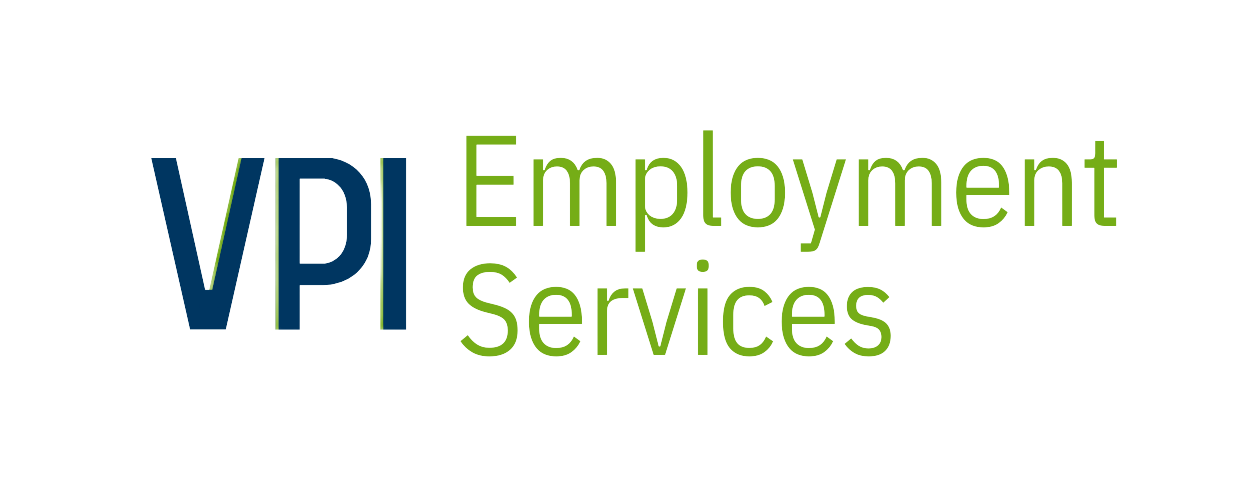With the new year in full swing, 2019 is poised to be an exciting one for Canadian businesses. Here are some key labour market, talent, technology and workplace trends that you can keep an eye out this year.
Looking for help with your business in 2019? From hiring support to government-funded training subsidies, we have the tools and services to help you make 2019 a great year for your business. For more information on how we can help, contact us today.
Labour Market Trends
Tight Labour Market
With the Canadian unemployment rate at record lows (the unemployment rate hit 5.6% at the end of 2018) the Canadian labour market is set to continue to tighten in 2019. In a tight labour market, the economy approaches full employment. As a result, recruitment becomes more difficult and wages go up. A tight labour market creates a skills shortage. When a skills shortage is combined with a growing economy it can create conditions for increased hiring and employer confidence.
Confidence
According to a report from HAYS, employer confidence remains high for 2019 with 63% of employers anticipating an increase in business activity and only 5% expecting a decrease.
Among the key reasons for confidence cited by employers are the strengthening Canadian dollar and economy. The issues that are having the greatest negative impact on employer outlook include:
- NAFTA
- Global political uncertainty
- Changes in local government
- The real estate market
- Minimum wage
Headcount
Employer confidence translates into increased anticipated hiring. Over 50% of employers plan to increase headcount in 2019. The predicted increase in permanent headcount for 2019 is 37% higher than 2018. For 2019 24% of employers anticipate making additional temporary staff hires. In both 2017 and 2018 employers under-anticipated their permanent and temporary hiring needs.
Skills shortage
Ironically, in a tight labour market when employers seek to increase hiring, it can make a skills shortage worse and create greater inefficiencies in the market and within a business. According to employers surveyed by Hays, the main causes of the skills shortage are:
- Fewer people entering the job market
- Lack of training & professional development available
- People relocating to other regions
- People leaving to join a different organization
- Retirement
Skills shortages can have negative effects on businesses. They make the hiring process more lengthy, difficult and costly. 60% of employers surveyed by Hays said that “productivity” is the primary problem caused for businesses. Skills shortage also impacts existing staff as they try to pick up the slack of understaffing or inefficient staffing–73% of employers said that workplace stress and pressure have the biggest effect on staff. Here are the top 5 ways employers are addressing productivity concerns:
- Change in process/policies
- Change in organizational structure
- Internal training
- New technology/systems
- Successions planning
In a skills shortage, the available talent pool gets smaller and wages tend to go up. What trends can we expect for talent in 2019?
Talent Trends
Salary
Despite past business growth and anticipated future growth, businesses have steadily offered smaller salary increases to staff. Between 2013 and 2018, the percentage of employers who offered salary increases greater than 3% (less than the rate of inflation) has decreased from 41% to 24%. For 2019, only 23% of employers expect to increase salaries by 3% or more.
According to a survey of employees by Ceridian, the median expected salary increase is 5%. However, according to Hays, only 1/20 employers intends to increase wages by 5% or more in 2019.
Recruitment
Rather than increasing existing staff salaries, employers seem to be using increased starting salaries as a powerful tool for recruiting. 61% of employers have increased their budgeted offer to recruit new talent. But higher starting salaries combined with lower long-term raises can have a negative effect.
More than half of Canadian employees surveyed by Hays believe their salary is not competitive. And 41% of employees are actively considering leaving their current role to look for higher starting salaries with different organizations.
Retention
According to a survey of employees by Ceridian, 28% of respondents left their last job because of a low salary. But salary is not the only key factor in recruitment and retention–14% of respondents left because they were not interested in the work, and an additional 12% left because they were not given opportunities to advance. Engagement is key to keeping talented staff.
In the same survey of employees, Ceridian found that only 27% of employees are not looking and would not consider a position outside their current company. However, 77% of employees are happy with their current position. These two facts seem to contradict each other, but what they convey is the fact that job satisfaction is not the only factor that goes into deciding whether to stay with an organization.
Similarly, a good salary, while important, is not the only thing that employees consider when deciding to stay a company. When asked to name all of the reasons why employees stay at companies, the top three reasons are:
- Good job benefits
- Good salary
- Good relationship with colleagues
Interestingly, when the same employees were asked to name the single most important reason why employees stay at a company, the top three reasons are:
- Interesting work
- Good salary
- Job security
A “good salary” appears in both lists of reasons to stay with a company and it is undoubtedly important. But “interesting work” is the most important single factor for employees who stay.
In the middle of a skills shortage, with employers looking to make more hires, retaining top talent will be a key difference between businesses that thrive and those that don’t in 2019. With an apparent mismatch in salary expectations between employers and existing employees, finding ways to engage staff and make them feel that their work is interesting and important will be more vital than ever.
Technology Trends
Skills gap
According to a recent World Economic Forum (WEF) survey of employers from around the globe, technology is poised to reshape the workforce in the next five years. The wider-spread use of emerging technologies like automation and big data will make it faster and easier for businesses to find efficiencies, eliminate redundancies and create new opportunities.
According to the WEF, by 2022, 85% of businesses are likely to have expanded their adoption of big data analytics and up to 42% of task-hours will be performed by machines. At least 50% the workforce will require reskilling, including senior positions.
Along with a skills shortage, 2019 is also poised to showcase a widening skills gap. A skills gap emerges when there is a mismatch between the skills that are required in a labour market and the skills that are available. Look for the skills gap to widen as some companies struggle to keep up with the pace of changing technology. Try to stay ahead of the skills gap by surrounding yourself with a team that has the appropriate skills to match the changing technological landscape. That means that you may need to invest in training for your staff and you may need to be trained as well–40% of WEF-surveyed employers see skills gaps at the leadership level as a key barrier to adopting new technology
Recruiting
One area where big data and automation is already creating business efficiencies is in recruiting. Be prepared in the coming years to get comfortable with using new technologies throughout the recruiting and onboarding process. According to LinkedIn, 42% of hiring managers say that data is a top trend affecting how they hire; 64% of recruiters currently use data and 79% say they will use it in the next 2 years.
Some key technologies that companies intend to introduce in the next three years for recruitment and onboarding include:
- Virtual Career Fairs
- Automated candidate nurturing platforms
- Employee referral software
- Automated resume screening
- Equal employment/Diversity analytics/reporting
- Onboarding software
- Recruiting analytics/Business intelligence
- Applicant tracking system (ATS)
Workplace trends
According to a survey conducted by LinkedIn, 3 top trends that are changing the workplace in 2019 are Soft Skills, Anti-Harassment, and Work Flexibility.
Soft Skills
94% of Canadian talent professionals rate soft skills as important to the future of recruiting.
As machine learning and AI have an increasingly large impact on the workforce, soft skills–which machines can’t (yet) easily replicate, are important skills to have in your talent pool. The key soft skill seems to be “creativity”–coming up with different solutions to problems. It is the number one skill that companies are looking for but are having a hard time finding according to LinkedIn’s report.
But soft skills can be difficult to assess–57% of employers struggle to assess soft skills accurately and only 41% of employers have a formal process in place to assess them. The top methods for assessing soft skills are currently:
- Behavioural questions
- Reading body language
- Situational questions
- Projects
- Tech-based assessments
Anti-Harassment
78% of Canadian talent professionals say anti-harassment is very important to the future of recruiting.
Workplace harassment is not a new problem. But in the last few years the level of openness around the conversation has increased. According to LinkedIn, there has been a year-over-year increase in the number of workplace-harassment-related content shared on the platform of 71%. And employers are taking notice–80% of talent professionals say their company is doing something to combat workplace harassment.
Some of the most common anti-harassment tactics currently used by employers include:
- Highlighting existing policies
- Promoting ways to safely report
- Adding or improving policies
- Establishing zero-tolerance policies
- Holding training sessions
Work Flexibility
71% of Canadian talent professionals say work flexibility is very important to the future of recruiting.
Improvements in communication technology and greater international commerce has changed the idea of the standard 9-5 office setting. Employees and job seekers now expect flexibility in their jobs. 31% of job candidates say that work flexibility is very important when considering a job. And businesses are responding by listing flexibility as a perk in job postings– according to LinkedIn, since 2016 there has been a 78% increase in job posts that mention work flexibility.
Improved work-life balance is one of the key benefits to increased work flexibility for employees. Businesses can also see increased productivity and reduced turnover as well. However, there are some barriers that work flexibility can create. Although technology may be able to improve things in the future, these are the top 3 challenges to work flexibility for businesses:
- Team bonding
- Collaboration
- Work oversight
Further reading
Labour Force Survey, December 2018
Hays 2019 Canada Salary Guide
World Economic Forum Future of Jobs Report 2018
Ceridian Pulse of Talent Report 2019
LinkedIn Global Talent Trends Report 2019

